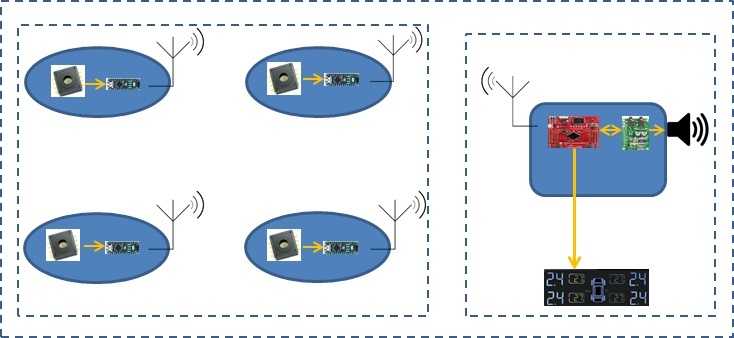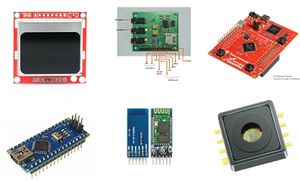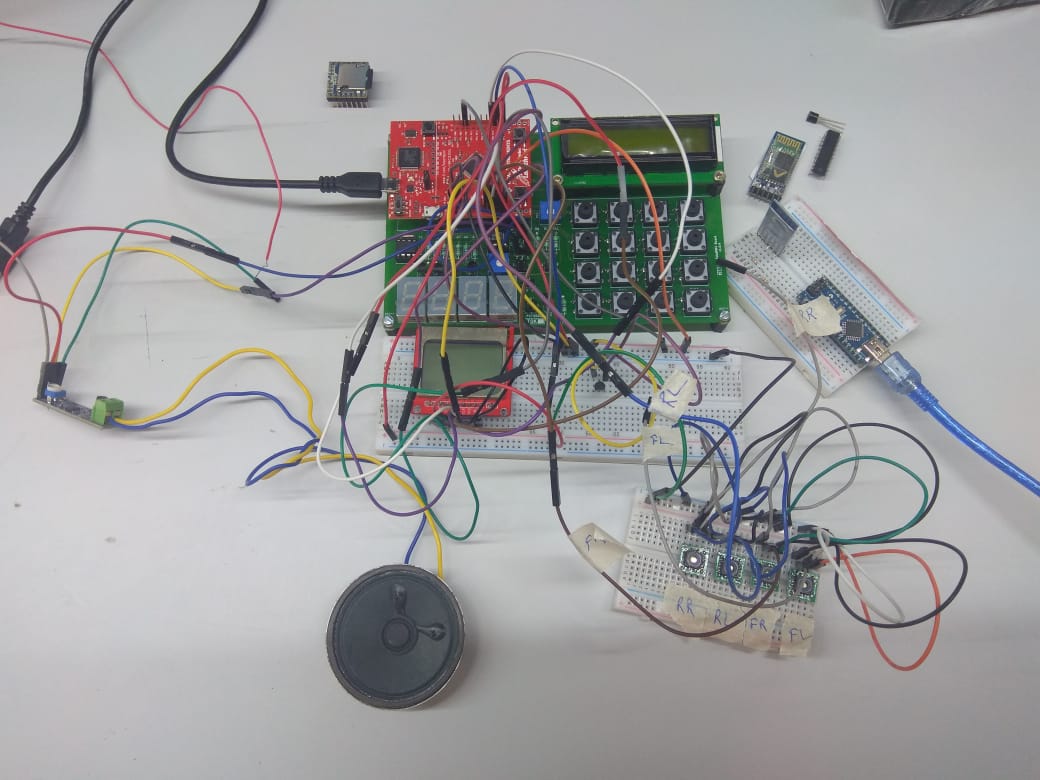Introduction
How many people check their tire pressures on a regular basis? If you walked outside and checked the air pressures in your vehicle’s tires, you’ll probably find that at least one is under-inflated. That’s what the U.S. Department of Transportation’s National Highway Traffic Safety Administration (NHTSA) discovered in a recent study. Tires under-inflated by as little as 3psi can adversely affect vehicle handling, as recent Goodyear and NHTSA tests show, when front tires pressures are low, a vehicle wants to go straight, thus requiring more steering wheel input to make the curve. Furthermore, under-inflated tires change the shape of the tire’s footprint and the pressure it exerts on the road, degrading the tire’s ability to transmit braking force to the road surface. With one or more tires on the majority of vehicles being nearly 8psi below the recommended inflation pressure, the chances of hydroplaning and overheating also come into play, not to mention the drop in fuel economy and the excessive wear on tire edges. NHTSA estimates that the installation of tire pressure monitoring systems, which would warn drivers of an under inflated tire, could prevent as many as 79 deaths and 10,365 injuries each year in the US alone.
Proposed System
A sensor system that can monitor the overall pressure of a tire is known as a centralized pressure monitoring system. The project proposes a design of such centralized pressure monitoring system for the tyres of a four wheeler. Each tyre will be mounted with a pressure sensor, transmitter and a nano processor board. The transmitted pressure readings of the four tyres will be received (on real time basis) by the base station which consists of a receiver, processor board, a display module, audio codec module and a speaker to give audio status to the driver. The audio interface will be implemented using uDMA.
Block Diagram
The block diagram of the proposed system is as follows:


Components Required
Components Required
2. Nokia 5110 LCD Module
3. WM8731 Audio Codec Module
4. KP229E3111 (Analog Absolute Pressure Sensor)
5. Speaker
Description
1. Interfacing of pressure sensor with TI Tiva Board: Qty -04 industrial grade pressure sensors were interfaced with Tiva board which were sampled for pressure values periodically using ADC0 module.
2. The sampled pressure values are displayed on the Nokia 5110 LCD module interfaced to the Tiva board to give visual commands and information to the driver. If pressure value of a particular tire goes below a specific threshold, the value starts flashing as an indication to the driver.
3. For audio warnings, we tried interfacing WM8731 audio codec module to the Tiva board. But since audio codec module has I2S interface for data transmission and same is absent in Tiva board we could not achieve it. Hence, we decided to produce audio warnings by using on-board DAC (LTC1616) of Edu Arm Trainer board. We used Audacity software to record the warning messages at a sampling rate of 8KHz and 8 bit sampling and generated raw audio file. The file was then converted to hex format using HxD Hex Editor software. The generated Hex values were subsequently stored in ROM of Tiva. Using SysTick, samples were sent to DAC at an interval of 1/8000 = 0.125 ms. Audio warning messages were generated for driver using 5W speaker.
4. The complete system was integrated and real time performance was achieved with visual and audio warnings to the driver for the improper tire pressure.
Software Implementation
The relevant programs developed are available at Github.
Developed System
A prototype was prepared for lab demo of the proposed system with TI Tiva C board as base plateform.


Future Work
1. Audio may be generated using uDMA to play tracks stored on an SD card.
2. HC-05 Bluetooth modules may be integrated with Arduino board for wireless transmission of pressure values to the base station.
3. Logging of pressure readings may be carried out for trend analysis. This feature is available in commercially available TPMS kits.
4. Care needs to be taken to avoid damage to the system during cranking of the car due to sudden spikes in the electrical system of the car.
References

Recent Comments